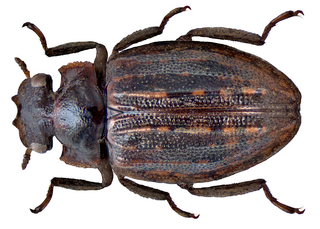
Spercheus is a genus of aquatic beetles which are placed in a family of their own, Spercheidae within the Hydrophiloidea. About 20 species are known from around the world except the Nearctic with the majority being from the Oriental and Afrotropical Realms.

Hydrophilidae, also known colloquially as water scavenger beetles, is a family of beetles. Aquatic hydrophilids are notable for their long maxillary palps, which are longer than their antennae. Several of the former subfamilies of Hydrophilidae have recently been removed and elevated to family rank; Epimetopidae, Georissidae, Helophoridae, Hydrochidae, and Spercheidae. While the majority of hydrophilids are aquatic, around a third of described species are terrestrial, mostly belonging to the subfamily Sphaeridiinae.

Hydrochus is the only living genus of beetle in the family Hydrochidae, which belongs to the superfamily Hydrophiloidea. Hydrochus includes about 180 species, which are found worldwide. Hydrochus has also been used for a fly genus in the family Dolichopodidae. This junior homonym is a junior subjective synonym of the genus Rhaphium.
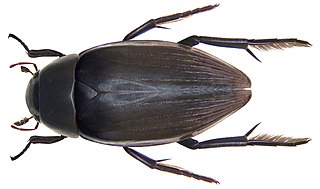
Hydrophilus is a genus of beetles in the family Hydrophilidae, the water scavenger beetles. There are 53 species in three subgenera in the genus: Hydrophilus, Dibolocelus, and Temnopterus.
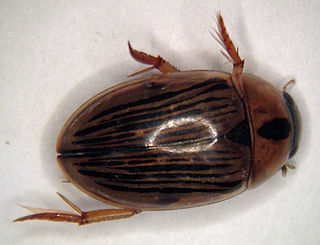
Tropisternus is a genus of hydrophilid beetles with 63 species in five subgenera in North and South America.

Helochares is a genus of water scavenger beetles in the family Hydrophilidae, represented by 161 described species. It is distributed across the Afrotropical, Australasian, Indo-Malayan, Nearctic, and Palearctic realms.

Cymbiodyta is a genus of hydrophilid beetles with 31 species. Twenty–eight of the species occur in the Americas and three species in the Palearctic.

Cercyon is a genus of water scavenger beetles in the family Hydrophilidae. There are at least 50 described species in Cercyon.

Laccobius is a genus of water scavenger beetles in the family Hydrophilidae. There are more than 80 described species in Laccobius.

Hydrobiomorpha is a genus of water scavenger beetles in the family Hydrophilidae. There are 56 extant described species in Hydrobiomorpha, along with several fossil species.

Hydrochara obtusata is a species of water scavenger beetle in the family Hydrophilidae. It is found in North America.
Crenitis is a genus of water scavenger beetles in the family Hydrophilidae. There are about 19 described species in Crenitis.
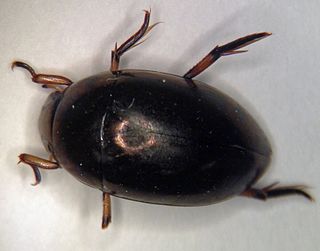
Tropisternus blatchleyi is a species of water scavenger beetle in the family Hydrophilidae. It is found in North America.
Hydrochara brevipalpis is a species of water scavenger beetle in the family Hydrophilidae. It is found in North America, and was discovered in 1980.
Hydrochara spangleri is a species of water scavenger beetle in the family Hydrophilidae. It is found in North America.
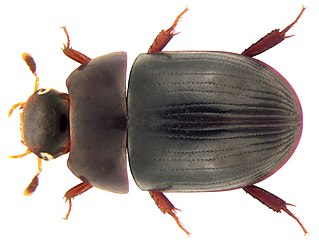
Dactylosternum is a genus of water scavenger beetles in the family Hydrophilidae. There are more than 20 described species in Dactylosternum.

Coelostomatini is a tribe of water scavenger beetles in the family Hydrophilidae. There are about 7 genera and more than 70 described species in Coelostomatini.

Cryptopleurum is a genus of water scavenger beetles in the family Hydrophilidae. There are about 11 described species in Cryptopleurum.
Hydrochara lineata is a species of water scavenger beetle in the family Hydrophilidae. It is found in Central America and North America.
Hydrochara soror is a species of water scavenger beetle in the family Hydrophilidae. It is found in North America. The diet is composed mainly of other aquatic arthropods, though they've been known to consume plant matter as well. They're primarily nocturnal, but are sometimes active by day and do not hibernate.














